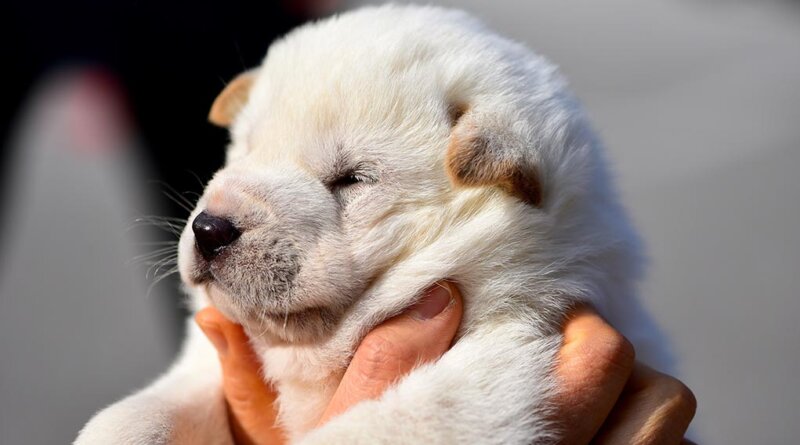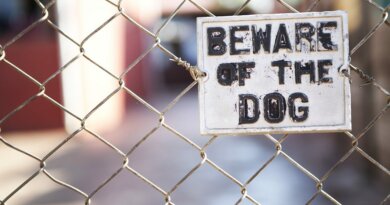4 Most Popular Korean Dog Breeds [2021]
Korean dogs are some of the most intelligent and fun loving creatures in the world. They are unique not just because of their origin, but in most cases, they have been reared differently to dogs in the Western world. On this page, you will find detailed information about the most popular Korean dog breeds including their history, behavioral tendencies, grooming and a range of other facts to help you learn more about these fantastic canines.
One of the Korean dog breeds unique selling points is that they were always raised as guard dogs and so they are fiercely protective of their owners. Sadly, Korean dogs have not always been regarded as companion pets. It is been a part of the Korean heritage to eat dogs; and to this day, Koreans consume approximately one million dogs per year. But due to several animal rights groups campaigns, this practice is slowly coming to an end and a lot more Koreans have started treating dogs like the precious creatures they are. Here is everything you need to know about some of the most popular Korean dog breeds.
1. Sapsali
The Sapsali originates from an ancient Korean Kingdom called Silla. They have always been an important part of Korean society. The breed were used by the military who viewed them as a good luck charm because of their power to keep the enemy at bay. The Sapsali were not actually given a specific job in the military, for the soldiers, they played a symbolic role and they felt safer when these dogs were around.
The Sapsali were originally bred for the aristocrats and the royals; but they later became a household pet for anyone who could afford them. Unfortunately, the breed almost became extinct during the First and Second World War because so many of them were slaughtered and killed for their fur and skin. The Korean government crowned the breed a national treasure in 1992.
Behavior and Temperament
The Sapsali is a faithful, loving and kind dog; they are also fiercely loyal to their owners and make the perfect companion pets. If a person they do not recognize enters their territory, they will resort to excessive barking to intimidate them. But once they see that the individual is accepted by the family, they calm down. The Sapsali typically does well with other animals, but depending on the situation, they do have the potential to become aggressive when other dogs are around. They do get along well with children, although they should never be left alone with them because they are strong dogs and can get boisterous when excited. The Sapsali dog is also known as a therapy dog in Korean hospitals, and there have been many reports of them providing comfort to distressed patients.
The Sapsali is a highly intelligent dog and they learn very quickly. They are easy to train because they desperately want to please their owners and will do their best to perform any given task well. As with all dogs, they enjoy positive reinforcement and being praised when they do a good job.
These canines do not require excessive amounts of exercise, a walk once a day with some play time in between is enough to satisfy them. You can keep them in an apartment or a small home as long as you take them outside to get a workout.
Grooming
The Sapsali is considered a high maintenance breed. They need grooming more than once a week to keep their coats looking healthy and to prevent it from tangling. It is advised that you have them professionally groomed at least once a year. A failure to properly groom the Sapsali will cause severe matting and skin inflammation and irritation. Brush their teeth once a day, trim their nails once or twice a month and tend to their ears each time they are groomed.
Additional Information
- Colors: Golden, yellowish-blonde, reddish orange, brown, black
Fun Fact: The Sapsali was saved from extinction by the geneticist Ha Ji-Hong who kept the breed alive by combining advances in DNA technology with traditional breeding.
2. Tosa Inu
This breed originated in Japan but later found its way to Korea. Unfortunately, these precious canines are nicknamed “meat dogs” because for meat lovers, their meat is tender and juicy. They are typically sold in the Korean market, not as a pet but as a commodity. This enormous, splendid heavyweight of a dog is a distant relative of the Mastiff. Activist groups such as the Humane Society International have been campaigning against the Tosa Inus cruel treatment for many years.
Behavior and Temperament
The Tosa Inu is a loyal and affectionate breed, they don’t bark much and neither do they like being around a lot of noise. One of the reasons why these dogs are so quiet is that they were originally bred as Japanese fighting dogs, and a major rule during a fight is silence. These canines are very sensitive to their owners voice and listen attentively for commands. It is a natural guard dog and they are fearless, courageous and extremely protective.
If you are getting a dog for the first time, this is not the breed for you because they need a firm hand in obedience training from an early age. The Tosa loves being around children, but as with all dogs, they should not be left alone with them unsupervised.
The Tosa Inu is not outdoor friendly and won’t do well in a kennel. They must be kept inside, close to their owners or your dog will get depressed.
This breed does not need a lot of exercise, but they must go for a walk or a jog at least once a day. They do well in apartments as long as you are consistent in taking them outside once a day. The Tosa Inu also requires plenty of mental stimulation because they are highly intelligent.
Grooming
The Tosa is a low maintenance breed; although they have a dense coat, it only needs brushing once a week with a slicker or a light bristle brush. They are light shedders but massive droolers because of their large jowls. So always make sure you’ve got a drool rag at hand at all times. Bathing them once a month will suffice, you can give them baths in between this time if required. Brush your dogs teeth daily, check and clean their ears once a month and cut their nails twice a month.
Additional Information
- Colors: Red, brindle, fawn, black
- Height: 21.5 – 23.5 inches
Fun Fact: Despite its quiet nature, the Tosa Inu is known as one of Koreas most dangerous dogs.
3. Jindo Dog
The history of the Jingo dog is surrounded in mystery, it has been left to speculation as to how they came about because there have been no written records found about them. Experts agree that the breed has been around for centuries, but how they got to the island of Jindo is unknown. One of the most recounted theories is that the breed originated from Mongolia and was brought to Korea during the Mongol invasion of 1270 A.D.
Behavior and Temperament
The Jindo is renowned for its intelligence and loyalty. They have a pack mentality which makes them easy to train and eager to please. However, because they are so smart, they are not loyal to everyone. Once they respect you as their owner, they won’t waiver in their loyalty towards you. However, if they don’t, you will find this breed difficult to deal with. In other words, they are only easy to train once you have earned their respect.
Despite their loving and loyal personalities, it is essential that the Jindo is socialized early or they can get very aggressive around strangers. These canines love being around their owners and don’t do well outside unless they are exercising or playing. They are prone to separation anxiety, and when left alone for too long they resort to destructive behavior.
Grooming
One of the major benefits of owning a jingo is that they are exceptionally clean. Their coats clean themselves and they do not require frequent bathing. Three times a year is enough. Additionally, they groom themselves like cats; the only problem with the Jindo’s coat is that they shed a lot throughout the year, but even more so during the summer months. Brush their teeth once a month, and cut their toe nails twice a month.
Additional Information
- Colors: Black and tan, brindle, black, white
Fun Fact: A Jindo dog marched in the open ceremonies of the Korean Olympics in 1988.
4. Pungsan Dog
You will also hear the Pugsan dog referred to as the Poongsan dog, it is one of the rarest Korean dog breeds. It came about during the 16th century and was developed in the North Korean mountains. There are no records about their heritage, and experts have spent many years speculating about it.
Behavior and Temperament
The Pungsan dog is best known for its bravery when hunting and loyalty to its owner. It has a high prey drive making the breed unsuitable for multi-animal households. They will quickly eliminate small pets such as rabbits and cats. However, they can live with other dogs as long as they’ve been socialized with them from a young age.
The Pungsan is a fiercely independent breed, but at the same time, they thrive on human interaction. Therefore, despite their powerful hunting ability, they enjoy being at home with the family, they love to take part in family gatherings. They are very affectionate and are known to have favorites in a family who they will display more affection to than others. Nevertheless, they still show love to other family members. They withdraw from strangers but don’t act aggressive with them.
These canines are known for their superior guard dog capabilities, they are very territorial and will not back down from protecting their household against a threat. The breed must be trained well from a young age or they will become hostile and unpredictable in their behavior. If you are a first time dog owner, this is not the breed for you because they need an experienced trainer.
The Pungsan is a very large and powerful dog and they need a lot of exercise to keep them fit and healthy. They enjoy activities such as hunting, agility courses and hiking. They also like roaming around alone without a lead, it is safer not to do this in public because their hunter instincts will kick in when they see a small animal. Therefore, if you are going to allow your dog to go wandering, do so in your fenced back garden.
Grooming
The Pungsan breed has a lot of fur and they shed excessively; additionally, you will see an increase in shedding during their bi-annual moulting season. You will need to give your dog a good brush several times a week, but they are exceptionally clean and don’t require regular baths. Two to three times per year is enough, check and clean their ears weekly; brush their teeth daily and clip their nails twice a month.
Additional Information
Fun Fact: According to a popular Korean folktale, a Pungsan dog hunted and killed a Siberian tiger.
Final Thought
Refrain from impulsivity when buying a dog because cuteness is not an indication that you will be able to cope with the breed. One of the many reasons canines end up in shelters is because owners soon realize the magnitude of their decision. Looking after a dog takes work, and if you are not willing to make a lifelong commitment to one of these *Korean dog breeds*, it would be better not to own a pet.









Only wanna remark that you have a very decent web site, I love the layout it really stands out.
darknet markets 2024 darknet drugs dark market link
I am not very great with English but I line up this rattling easygoing to read .
I like this weblog its a master peace ! Glad I observed this on google .
This blog is definitely rather handy since I’m at the moment creating an internet floral website – although I am only starting out therefore it’s really fairly small, nothing like this site. Can link to a few of the posts here as they are quite. Thanks much. Zoey Olsen
lana rhoades videos – https://lanarhoades.pro/ lana rhoades full video
Great post. I was checking continuously this blog and I’m impressed! Very helpful info specially the last part I care for such info much. I was looking for this certain information for a long time. Thank you and good luck.
I care for such info much. I was looking for this certain information for a long time. Thank you and good luck.
What Is Sugar Defender? Sugar Defender is a natural blood sugar support formula created by Tom Green. It is based on scientific breakthroughs and clinical studies.
Thank you for the sensible critique. Me and my neighbor were just preparing to do a little research about this. We got a grab a book from our area library but I think I learned more from this post. I am very glad to see such magnificent information being shared freely out there.